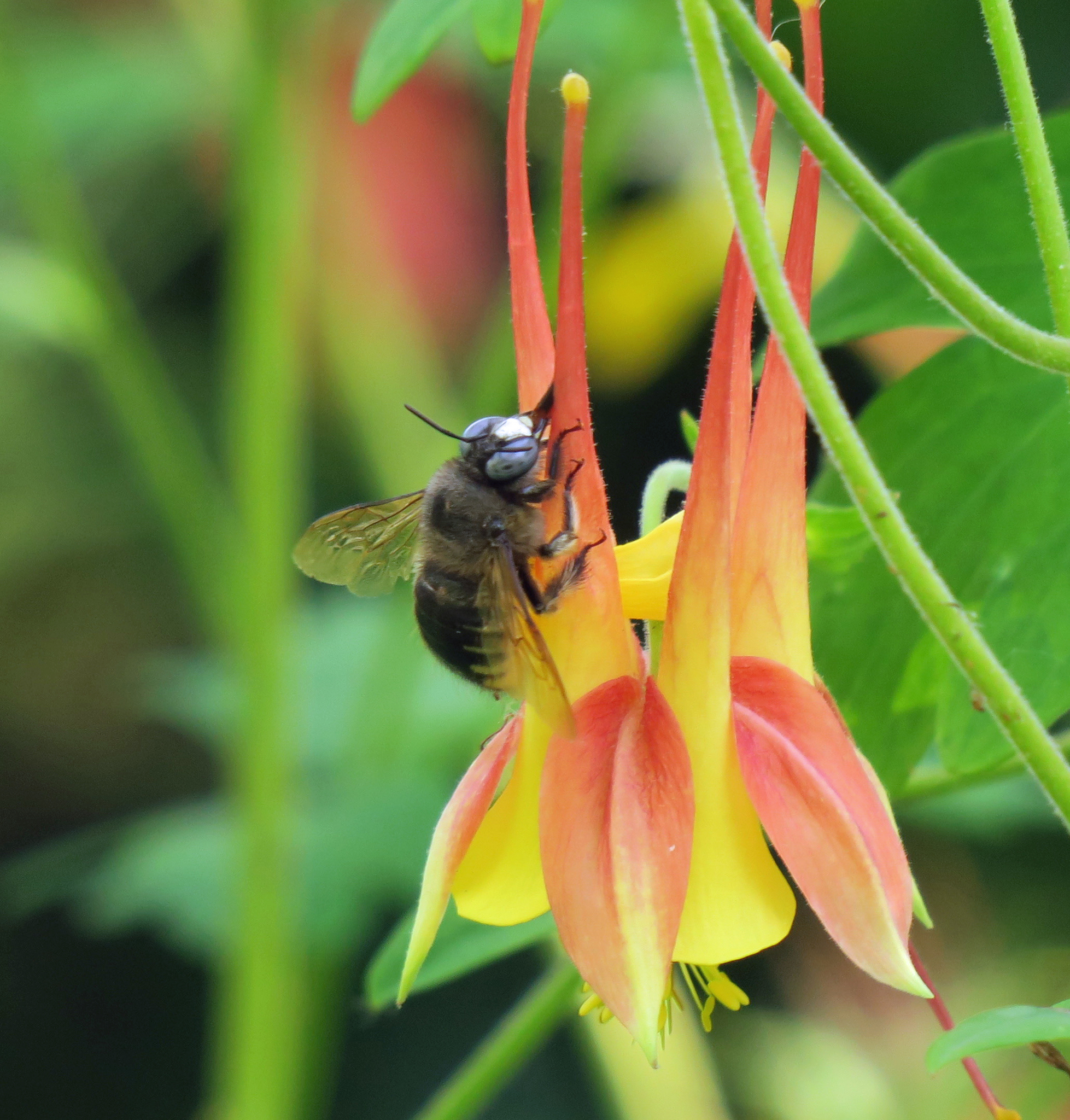30 June, 2024

14 March, 2024
06 May, 2020
Columbines and Parkinson's Carpenter Bees!
Columbines (genus Aquilegia) present an amazing array of size, shape and color. They're also some of my favorite flowers!
One reason they're amazing is their flower structure has changed in response to available pollinators. Columbine flowers have five tubes with nectar found at the back; a reward for pollinators with tongues long enough to reach. The nectar tubes are short-spurred in some species and longer in others.
Shorter-spurred, blue columbines attract bumblebees and other insects. Medium-spurred, red columbines attract hummingbirds, and longer-spurred, pale white or yellow columbines attract hawk moths. Even within one species there can be a radiation of pollinator attraction. In higher elevation, alpine environments, the Colorado Blue Columbine (Aquilegia coerulea) flowers have shorter spurs and are deeper blue, whereas lower elevation flowers (where it is warm enough for hawk moths to live) are paler, with longer nectar tubes.
https://www.fs.fed.us/wildflowers/beauty/columbines/naturalhistory.shtml
But those pollinators aren't the only animals using columbine flowers. Large carpenter bees (Xylocopa) also interact with them! Big, beautiful, not-always-the-most agile, carpenter bees are found across the USA and do pollinate some columbines. However their tongues are just too tiny to reach the nectar.
Not a problem! Carpenter bees can ROB.
In spring, many blue-eyed little Parkinson's Carpenter Bees (Xylocopa tabaniformis ssp. parkinsoniae) emerge in my Texas garden. These bees are very territorial, especially with clumps of columbine flowers, often side-slamming honey bees off them. But the flowers are yellow, red and hybrids, all with long-spurred nectar tubes. Why would the bees care about nectar they cannot reach? They seem mere mortals protecting ambrosia, or little dragons, sitting on gold piles they can never spend :(
Last week I was suddenly buzzed by a Parkinson's bee. It landed robustly on a fresh columbine flower. I liked to think they rested on them after all their honey bee bombing, but this one crawled to the back. With the speed of surgeon, it nipped and inserted its tongue into the back of the nectar tube. It robbed that sweet flower blind.

Robbing just means they drank the flower's nectar without pollinating it. These flowers were all ornamental anyway, and attracting native bees to boot. I was thrilled! All around the garden, so many columbine nectar tubes were slit and hanging off. Hummingbirds and hawk moths, your move!
Archives
- Month Posts
- June 2024 1
- March 2024 1
- May 2020 1



